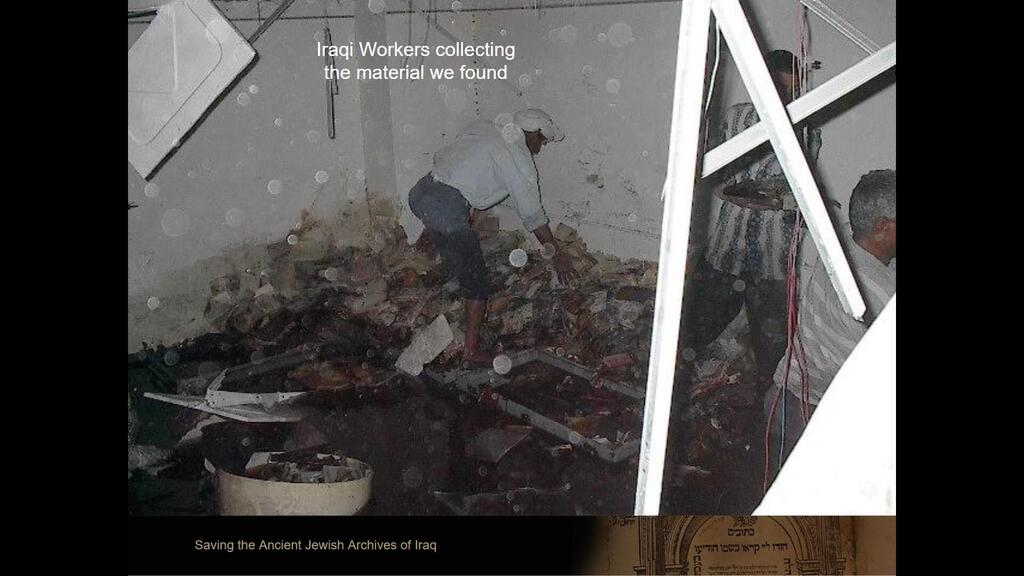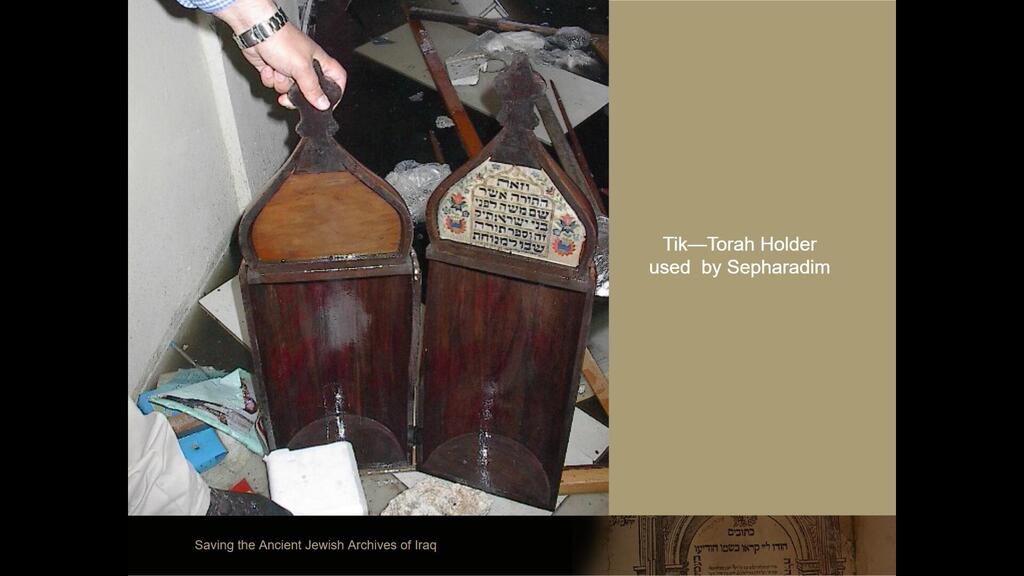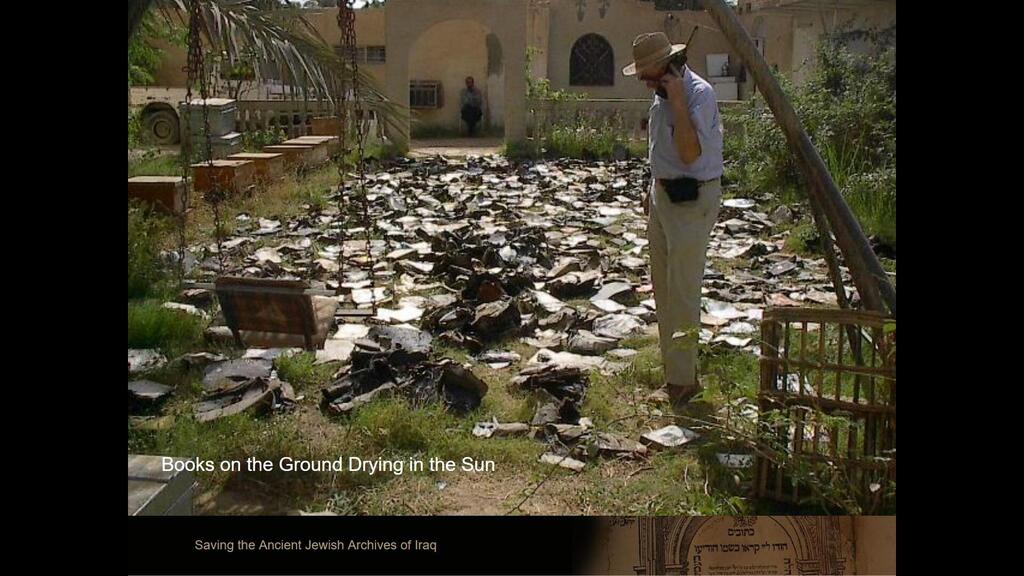Getting your Trinity Audio player ready...
Harold Rudd, a seasoned Pentagon consultant, was unprepared for the task of discovering a Jewish treasure when posted for duty in Iraq. He arrived in Baghdad as part of the 2003 American security mission during Saddam Hussein's downfall and served as an expert in the Muslim world and provided advisory services.
Read more:
Upon arriving in Baghdad, he received an unexpected phone call from a former Iraqi opposition leader he had been in contact with for years before the American forces entered. "He was on the line and urgently instructed me to come to the Mukhabarat building, which is the Iraqi intelligence facility," according to Rudd.
"I reached the location and discovered that an Iraqi intelligence agent had crossed enemy lines and was prepared to share information about the contents of the building. This individual was in charge of the Jewish division within the intelligence, something we were completely unaware of. We knew they were gathering intelligence about Israel, but we had no idea there was a distinct division for Jews, which also included a highly specialized archive."
The small group entered the building and descended to the basement, where the treasure was revealed: a vast archive of Torah scrolls, prayer books, parchment scrolls, certificates, representations of Iraqi Jews, and many other rare materials.
Why would the Iraqis even collect all of those materials in the first place?
"Up until now, the reasons remain somewhat unclear. It's worth noting that when Iraqi Jews left the country in the 1950s, they left with very few possessions, and a majority of the materials and sacred texts were concentrated within the women's section of one of the last operational synagogues or preserved in a suburb of Baghdad, which was once home to a vibrant Jewish community.
"According to one account, on a single day in 1984, two large trucks arrived unexpectedly in the middle of the night at the synagogue and took away the entire Jewish archive. It appears that since then and until its discovery, the archive had been stored within a building under the jurisdiction of the intelligence agency."
Rudd, an Ashkenazi Jew of Lithuanian descent, immediately grasped the profound situation before him: the historical and spiritual significance of Iraqi Jewry. The primary challenge stemmed from a unique twist of fate – an American missile striking the intelligence building but failing to detonate. This peculiar outcome left the structure intact, yet it compromised the building's water infrastructure, resulting in flooding on the lower levels, including the very spot where the archive was stored.
"I found myself immersed in waist-deep water, surrounded by sacred books and scrolls. It dawned on me that urgent action was imperative to prevent further damage due to the water," Rodd recounts.
He swiftly turned to American military officials, though his call for collaboration went unanswered. The one who extended a helping hand was the leader of the Iraqi opposition, who aided him in securing resources to begin the water drainage process. "I am not an expert in document recovery and restoration, so I reached out to the National Library of Israel by phone," he says.
"They started giving me instructions on how to dry the Torah scrolls and documents for preservation. At a certain point, I realized I needed practical assistance on-site, and I contacted Natan Sharansky, who was captivated by the story. He asked how he could help, and I suggested he reach out to his friend, Dick Cheney, who coincidentally held the position of vice president of the United States.
"Through Cheney, we requested that he discuss the matter with Defense Secretary Donald Rumsfeld, and in a short span of time I suddenly began receiving support. When Americans get involved, the pieces fall into place – the materials were carefully preserved, packed and transported with refrigeration in preparation for the journey to the United States. After a few days, the entire archive was flown to Texas and then onward to a specialized restoration facility in Washington."
The rare materials finally reached the hands of professionals who dedicated months to document restoration and digitization. Beyond preserving the documents, the primary goal was to upload the materials to the network, making them accessible to researchers and Iraqi Jewish descendants.
"The research continues to this day. All the time, we discover more documents and details that were previously unknown," Rudd says. "For example, they found Talmudic texts with handwritten notes by the great rabbis of the 19th century. Of course, their names were known to the community members, but finding annotations and interpretations is exceedingly rare.
"Many details about the community members themselves were also uncovered, including certificates of graduates from the Jewish school and even photographs. In one case, a close friend of mine of Iraqi descent, who left the country with his family in the 1970s, visited an exhibition in the United States showcasing some of the findings and discovered certificates from his school. He was deeply moved, as they left Iraq with nothing, and he had no remaining trace of his heritage. Suddenly, in the middle of the U.S., he found evidence of his childhood."
Where is the archive now?
"The content has been made available online, accessible to all, yet physically, it remains in Washington. Legally, there's a complex matter surrounding this content. International law stipulates that if one nation occupies another, all the discovered materials and cultural heritage must be returned to the invaded nation. However, this content pertains to the Iraqi Jewish community, which is no longer present in Iraq today.
"Consequently, I believe it should be entrusted to the Babylonian Jewish Heritage Museum in Israel, which now safeguards the records and archives of Iraqi Jewry. I anticipate this transition will occur eventually, as even though everything can be accessed online, there's no substitute for the ability of Iraqi descendants to physically engage with and closely examine the documents and books that constitute their personal legacy."
Do you think there is hope for Iraqi rebirth?
"The situation needs to be examined not from a Western perspective, but rather through the lens of the Arab-Muslim context. This highlights one of the American missteps, as they tried to establish a new form of governance post-war, yet failed to truly understand the reality on the ground. What truly matters there is your family and your tribal affiliation.
"At present, we're witnessing a prolonged inter-tribal conflict and, until a clear victor emerges, the state won't be able to make progress. In the Muslim world, a strong leader is required to define the terms for coexistence between winners and losers. Until that occurs, the current status quo will persist."





